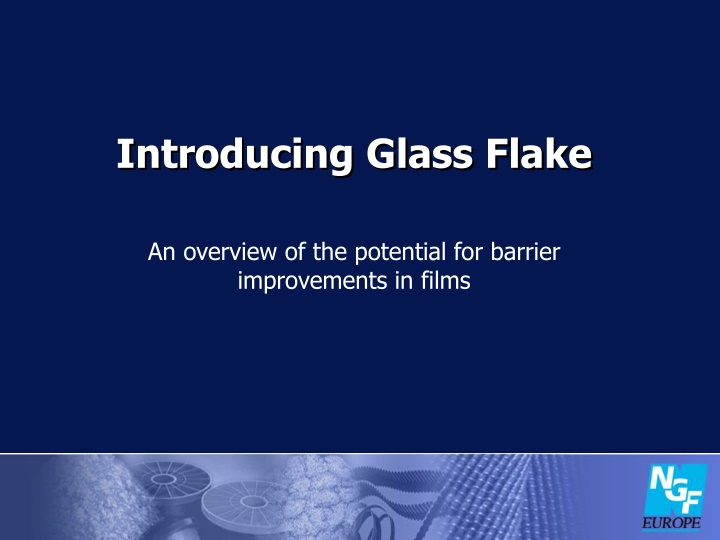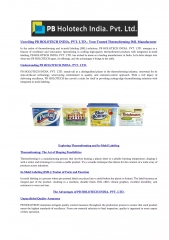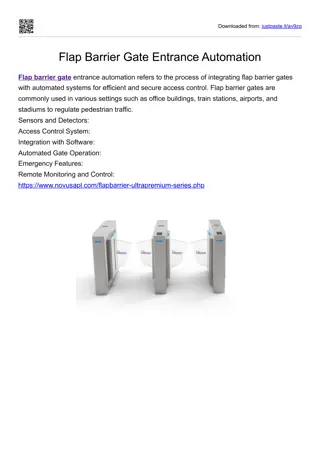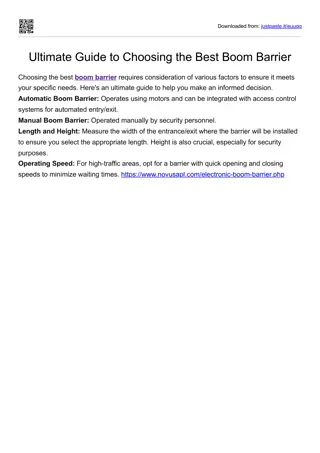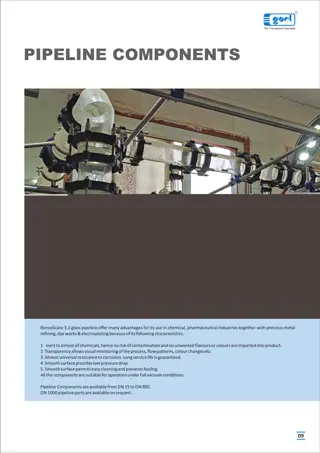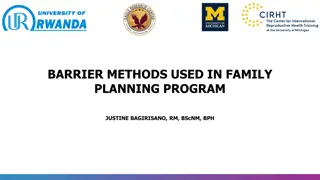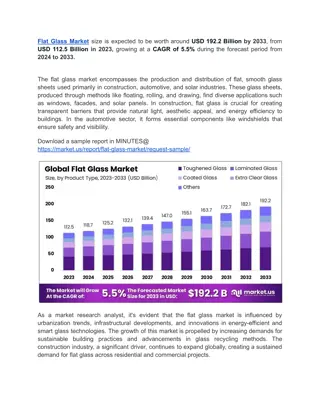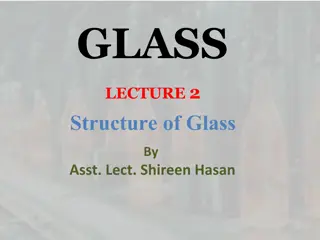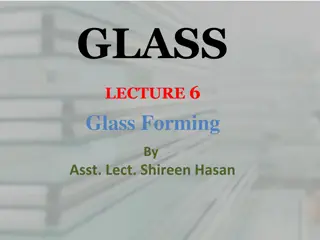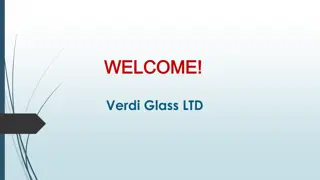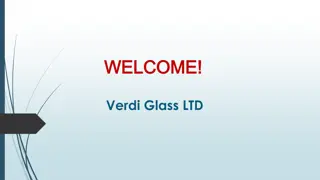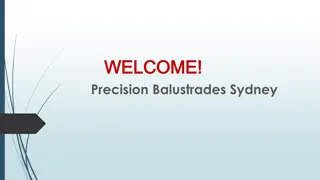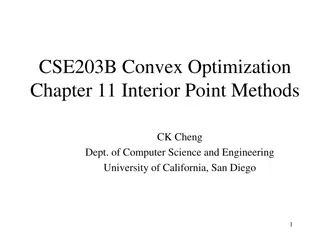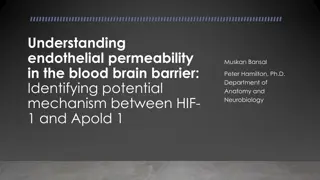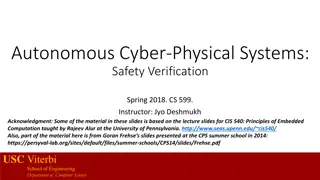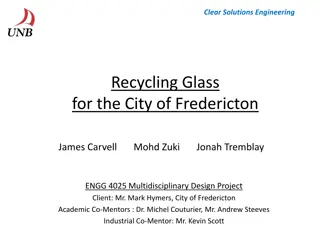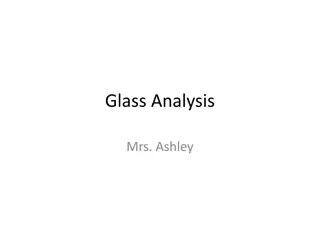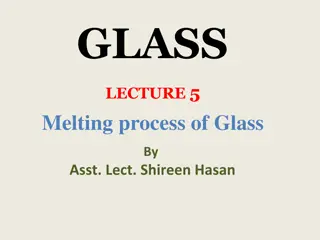Enhancing Barrier Performance with Glass Flake: Applications and Production Methods
Explore the potential for barrier improvements in films using Glass Flake, a thin glass material with varied applications. Learn about its production methods, traditional applications, and relevant experiences in enhancing barrier performance in packaging and coatings.
Download Presentation

Please find below an Image/Link to download the presentation.
The content on the website is provided AS IS for your information and personal use only. It may not be sold, licensed, or shared on other websites without obtaining consent from the author.If you encounter any issues during the download, it is possible that the publisher has removed the file from their server.
You are allowed to download the files provided on this website for personal or commercial use, subject to the condition that they are used lawfully. All files are the property of their respective owners.
The content on the website is provided AS IS for your information and personal use only. It may not be sold, licensed, or shared on other websites without obtaining consent from the author.
E N D
Presentation Transcript
Introducing Glass Flake An overview of the potential for barrier improvements in films
Overview Introduction to Glass Flake function and manufacturing Traditional Applications Relevant Experience Development of new grades specifically for barrier enhancement Profile of new grade RCF2300 Applications in packaging Derived products for special effects Summary
What is Glass Flake ? 1-5 microns thick Pieces of Glass C or E glass types Thickness 1- 5 microns average Diameter 15- 600 microns 15-600 micron diameter
Glass Flake Production Method O/size 600 Die 160 Drive bubble <160 Freeze line To off-line milling for 015 grades and Metashine Milling
How Glass Flake works Glass Flake Forms a multi- barrier within the film
Traditional Applications: i) E- glass Used in a broad range of engineering polymers since the 1970 s Controls warpage, shrinkage and anisotropy. Can be specially treated (Fleka) to ease handling Lower alkali content is preferred by some special polymers
Traditional Applications ii) C- glass Compatible with the majority of polymers Used in polyester, epoxy and vinyl ester coating systems for aggressive environments for over 30 years. New grades provide enhanced barrier performance. allows coating thickness to be reduced
Relevant Experience i) Coatings Over thirty years usage in high performance spray- applied coatings Achieves typically a factor of six reduction in permeability of spray applied coating films
Relevant Experience ii) Engineering polymers ASTM D3985 Oxygen Permeabillity (cm3*mm/(m2*day*at 1.2 Work on 60 micron thick PA film shows a 5%wt addition achieved a reduction in Oxygen permeation of over 50% ( ASTM 3985) Glass flake: Microglas RCF-160 1 0.8 RCF-160 m) 0.6 0.4 0.2 0 PA6 PA6+5% flake Sample
Relevant Experience iii) Elastomers Independent water vapour permeation testing work by RAPRA to ISO 2528 Permeability (ISO2528) 4.00E-11 3.50E-11 RCF-160 3.00E-11 gm/sec/m/Pa 2.50E-11 2.00E-11 A factor of 10 reduction in permeation achieved by a 13% addition of 5- micron thick flake. 1.50E-11 1.00E-11 5.00E-12 0.00E+00 0 5 10 15 Flake (phr)
Permeation Experiment 60 C Weight loss over 7 days
Development of new grades Development work identified potential benefits from thinner flake : More flake particles per unit addition and per unit barrier thickness Process developments Production of a 2 micron flake using existing technology Further reductions in flake thickness also possible Field experience greater flexibility of 2-micron flake allowed increases in flake size
Profile of new grade RCF2300 2 microns 5 microns RCF 160 RCF 2300 160 microns 300 microns
Performance of RCF 2300 Water Vapour Permeabillity (JIS Z0208)(g/M2/mmHg/Day) 0.017 0.015 Permeabillity 0.013 0.011 0.009 0.007 0.005 RCF160 RCF600 RCF2300 Flake Grade
Benefits of glass flake in films Barrier enhancement Improved thermal properties HDT and VICAT increase as flake is added Transparency retained Reduced anisotropy of mechanical properties Improved dimensional stability
Applications for Glass flake in packaging Multi- layer systems Flake is a general barrier to water, oxygen and CO2 Potential to eliminate species specific barrier layers and associated tie-coats Single layer systems Enhanced performance extends the applications of single layer systems.
Development of Derivative products - Metashine Very specific particle sizes of 5 or 2 micron thick C or E-glass flake coated with: Silver Nickel silver Gold Titanium dioxide Others on request
Metashine Technical Benefits Brilliant optical effect at low addition levels Retains mechanical and processing characteristics Effect is maintained even in strongly coloured bases e.g. polymers and lipsticks Metashine is robust during processing : Injection moulding Optical effect is durable and long lasting.
Summary Glass flake offers some significant potential benefits in film applications Functional barrier Decoration of special products We are actively seeking partners to collaborate with in the development of this market
